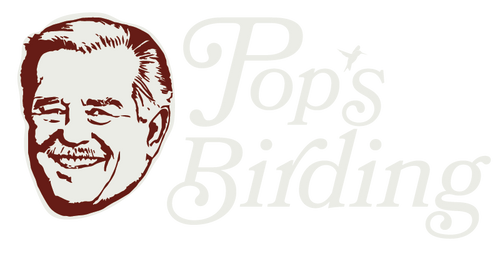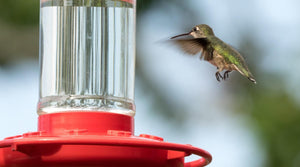What you will need:
- White granulated sugar
- Tap Water
Do not add red dyes! It's not necessary and can be harmful to a hummingbird's diet. Red dye 40 is associated with hyperactivity and various types of cancer and Red 3 is associated with causing thyroid cancer and chromosomal damage. If these are the potential risks with consumption in humans, why even chance it with your tiny hummers.
It's a common myth red dye is needed to attract hummingbirds to your feeder. Although hummingbirds associate red with food, it's safer to buy a feeder with red coloring. Red glass feeders are recommended because it reduces the risk of BPA toxins getting into their food source. Also, hummingbirds are inquisitive enough their own to discover and stick around a feeder with or without red colors to attract them - as long as you offer the freshest nectar on tap - they'll be happy, regular customers!
Nectar Batch Sizes (4:1 ratio):
Small 8oz. Batch: 1 cup water; ¼ cup sugar
Medium 16 oz. Batch: 2 cups water; ½ cup sugar
Large 32oz. Batch: 4 cups water; 1 cup sugar
Recipe:
- Boil water on medium to high heat
- Add sugar to boiling water
- Boil for an additional 2 minutes (to create a syrup); stirring constantly to dissolve the sugar crystals
- Once the sugar is dissolved; remove from the heat and let cool
- You are ready to fill your feeder once the nectar mixture reaches room temperature. You can speed this process up by placing it in the refrigerator
- Store the additional nectar in a airtight container in the refrigerator; recommend to store no longer than 10 days, checking the quality before using is always a safe rule of thumb
Here are some guidelines to help determine how often to change the nectar in your feeder, to avoid spoiling:
- 60-70 degrees change weekly
- 71-80 degrees change every 3-4 days
- 81-85 degrees change every 2-3 days
- 86 degrees & up change everyday to every other day
Clean Feeders Regularily
Feeders should be located in a shaded area out of direct sunglight. Be sure to clean feeders often with water and vinegar or mild soap and rinse thoroughly. Keep a few different size brushes like bottle brushes, port brushes and a curled brush to get every nook and cranny where residue or mold can be hiding. Be cautious cleaning feeders with bleach or dish soap, if not washed thoroughly it can leave residue that can be harmful to your hummers.
Want to print the recipe? Just click here.
If you're interested in a no-hassle, dye-free and preservative-free nectar solution with added electrolytes, calcium and wildflower extracts - try Pop's Nectarade here.



9 comments
Thank you Sir 👍
feeder well should also be washed and cleared of debris
I’m going to make it because humming birds are already buzzing my bell where the feeder hangs. The bell is put there in the winter. The feeder is hanging the rest of the time.